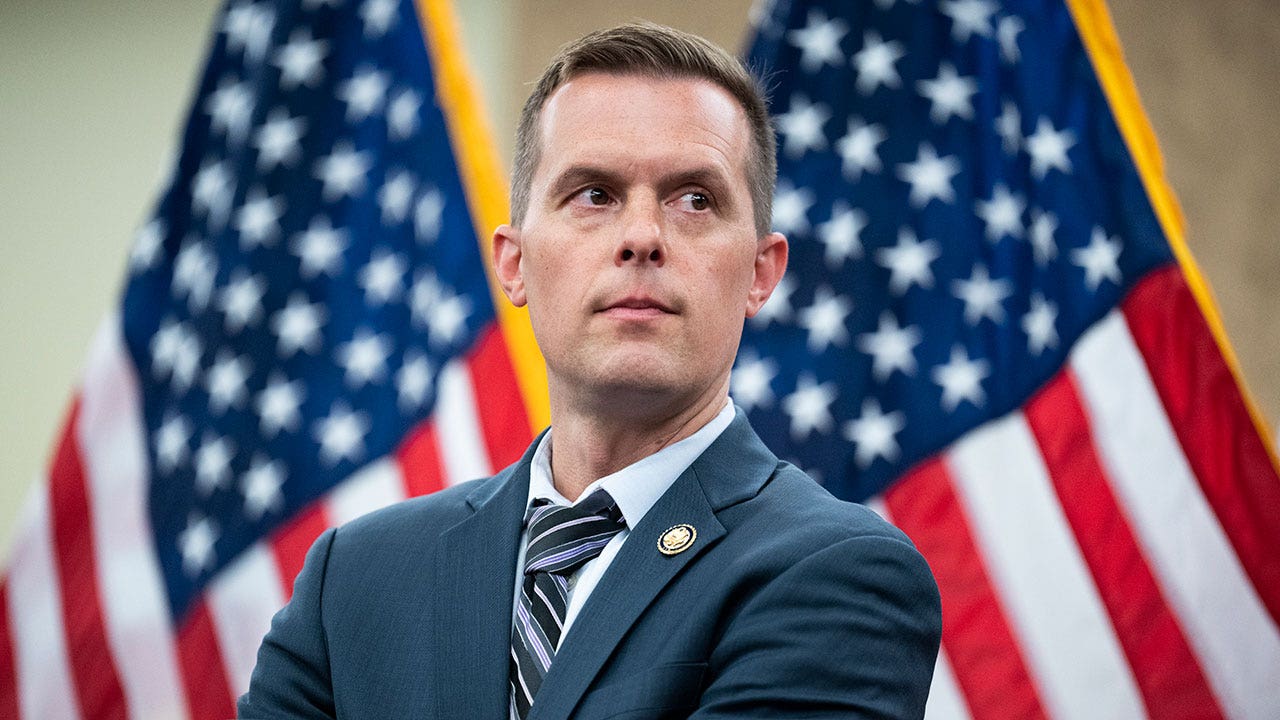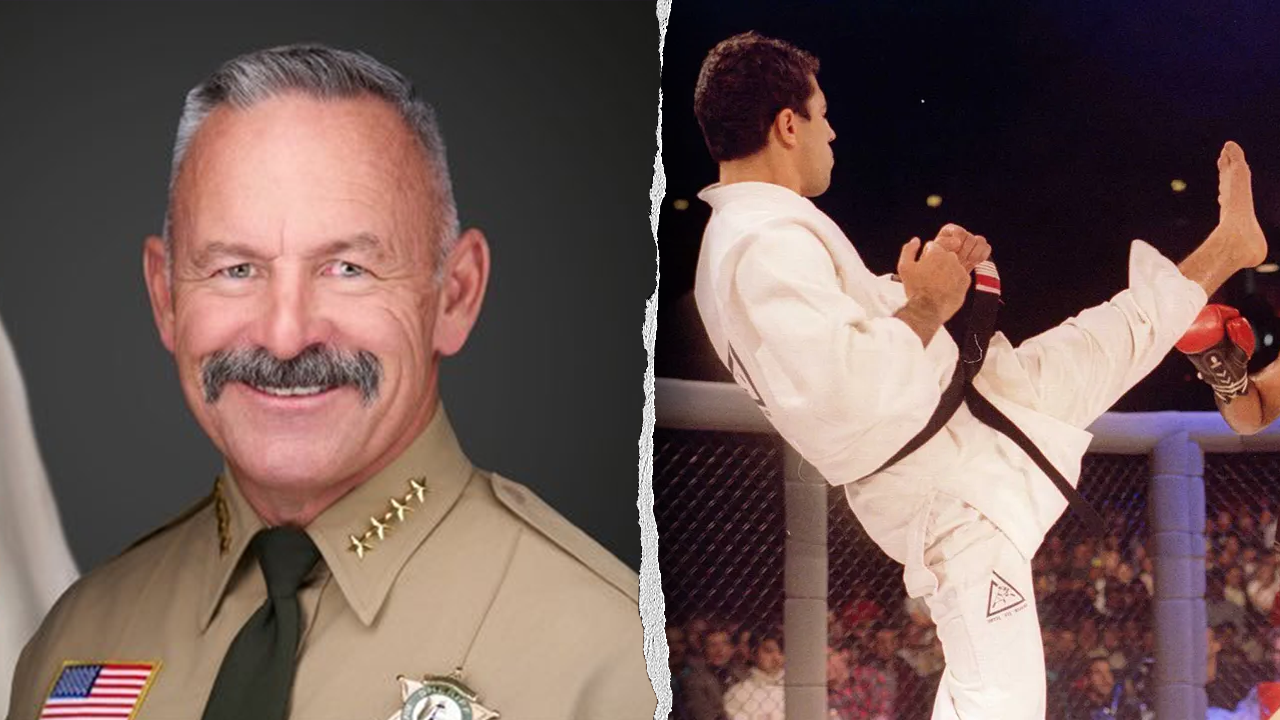West
Oregon governor declares March 10 'Abortion Provider Appreciation Day': 'Continue to have your back'

Oregon’s governor has signed a proclamation that will make March 10 “Abortion Provider Appreciation Day,” in an effort to reaffirm her administration’s commitment to “maintaining access to abortion care across the state.”
“Here in Oregon, we understand that abortion is healthcare, and providers are appreciated and can continue to provide care without interference and intimidation,” Governor Tina Kotek said in a statement. “To our providers and to the patients who live in Oregon or have been forced to retreat to our state for care, know that I continue to have your back.”
Immediately following the November election, officials said Kotek directed the Oregon Health Authority (OHA) to partner with OHSU to replace the state’s three-year supply of Mifepristone — a medication approved by the Food and Drug Administration (FDA) over 20 years ago for use in miscarriage management and to end a pregnancy.
The governor said she continues to work with providers and the OHA to monitor and identify ways to mitigate federal threats to reproductive care.
EFFORT TO STOP ‘EXTREME ABORTION ACTIVIST’ RAMPS UP IN PIVOTAL SWING STATE ELECTION
Gov. Kotek declares March 10 “Abortion Provider Appreciation Day.”
“Oregon leads the nation with the strongest protections to access reproductive health care, including abortion. In these uncertain times, I’ll safeguard our values,” Kotek wrote in a post on X.
Oregon Senate Republicans shared their reaction to Kotek’s declaration and slammed the governor for focusing on “abortion provider appreciation” over fixing other issues in the state.
“Fix crime? Fix schools? Fix affordability? Nah… Kotek declares ‘Abortion Provider Appreciation Day’ instead,” the group wrote in post on X with a meme attached.
In 2023, Kotek signed the Access to Reproductive Health Care law, House Bill 2002. The bill protects access to reproductive healthcare and provides state funding to support the work of community organizations and clinical partners to ensure that people across the state have broader access to the reproductive healthcare they need.
The bill also allows minors to undergo sex reassignment surgery or obtain an abortion without their parent’s permission.
OREGON REPUBLICANS SLAM BILL THAT ALLOWS SEX CHANGE, ABORTION FOR MINORS WITHOUT PARENTAL CONSENT: ‘A NEW LOW’

Democratic Oregon gubernatorial candidate Tina Kotek, then the speaker of Oregon’s House of Representatives, addresses the Democratic National Convention in Philadelphia on July 25, 2016. (David Paul Morris/Bloomberg via Getty Images)
Justin Hwang, chairman of the Oregon Republican Party, previously said, “HB 2002 is what happens when progressive politicians and their far-left base put woke ideology ahead of common sense.”
“This bill represents a new low for Oregon and an even bigger loss for children and parents,” Hwang told Fox News Digital. “Imagine being a father or mother who finds out that their child has made a life-changing decision without any consent or notification.”
GOP LEADERS EXCORIATE OREGON DEMS FOR PASSING ‘MOST EXTREME’ ABORTION, TRANSGENDER LAW ‘IN HISTORY’

According to the governor’s office, reproductive health equity is a longtime priority of Kotek. (Moises Avila/AFP via Getty Images)
According to the governor’s office, reproductive health equity is a long-time priority of Kotek, both from her time as speaker of the Oregon House and during her tenure as governor.
The Pro-Life group “Oregon Right to Life” reacted to the governor’s proclamation and said they would not be supporting the measure.
“You may have heard it’s Abortion Provider Appreciation Day—but we’re not celebrating abortion. We’re honoring a brave former abortion worker who chose to walk away from the industry,” the organization wrote in a post on X.
Oregon Right to Life Executive Director Lois Anderson shared an additional statement on the proclamation with Fox News Digital, calling it “unsurprising but appalling.”
“There is nothing to celebrate about an industry that profits from taking advantage of vulnerable women and ending the lives of innocent human beings under the guise of ‘health care’,” Anderson said. “Oregon Democrats’ continued obsession with abortion until birth is honestly disturbing.”
According to Oregon Health Authority data, of the 10,075 abortions provided in Oregon in 2023, 1,661 were patients who reside out-of-state, reflecting a nearly 60% increase from the prior year.
Fox News Digital’s Bradford Betz contributed to this report.
Stepheny Price is a writer for Fox News Digital and Fox Business. She covers topics including missing persons, homicides, national crime cases, illegal immigration, and more. Story tips and ideas can be sent to stepheny.price@fox.com
Read the full article from Here

San Francisco, CA
The True Story of the Military’s Secret 1950 San Francisco Biological Weapons Test | KQED

Episode Transcript
Katrina Schwartz: It’s a foggy September day in 1950s San Francisco. For most Bay Area residents, it’s a normal day…people get up and head out to work or school…just like any other day. The San Francisco Examiner is full of news about the Korean War and a reminder that daylight savings ends soon.
On the ocean, just outside the Golden Gate, floats a Navy boat. On deck, men hold up what look like big metal hoses and point them at San Francisco. There’s a long, low cloud over them that could be mistaken for part of the area’s usual fog, but it’s not.
Two days later, Stanford hospital, which was located in San Francisco at the time, started noticing something odd. Doctors started seeing some patients complaining of serious chest pain, shortness of breath, chills and fever — symptoms of what’s called serratia marcescens infection. Doctors had never seen this bacteria at the hospital before, and certainly not in so many patients at one time. Eleven people got sick, and one would die.
Is it possible that the U.S. military was testing biological weapons on its own citizens? That’s what one Bay Curious listener wants to know. We’ll get into it right after this. I’m Katrina Schwartz, and you’re listening to Bay Curious.
Sponsor message
Katrina Schwartz: The question we’re answering today is whether it’s possible the U.S. government was spraying bacteria over its own citizens to learn more about how to stage a biological attack on an enemy. And it’s true. In 1950, the military sprayed bacteria over an unsuspecting Bay Area for eight days, with no medical monitoring plan.
It was just one of hundreds of experiments that the military carried out in secret across the nation from the 1940s through the 1960s. These tests would affect people’s lives and help shape our country’s policy on biological weapons. Reporter Katherine Monahan takes us back to that time to help us understand how and why this happened.
Sounds of archival newsreel static
Katherine Monahan: The U.S. was obsessed with the threat from the Soviet Union.
Archival newsreel: In 1950, men throughout the world learned to look at the brutal face of communism…
Katherine Monahan: The Cold War was in full swing, and the Korean War had just begun. Only a few years out of World War II, people feared a World War III was on the horizon. And Army spokesmen said the only intelligent move was to prepare.
Clip 1: For many years, information has been needed about the effects of a biological warfare attack on man.
Clip 2: Because today the threat cannot be ignored.
Clip 3: If we adopt a pacifist attitude the end can only be a communist dictatorship of the world.
Katherine Monahan: During WWII, the U.S. government had created a chemical weapons research division within the military. And in the late 1940s, it began testing on human subjects.
Matthew Meselson: A very small circle of people knew anything about this. After all, it certainly wasn’t public knowledge.
Katherine Monahan: Matthew Meselson is a Harvard molecular biologist and geneticist who served as a government consultant on arms control. He was instrumental in changing our nation’s policy on biological weapons.
Matthew Meselson: Research on weapons goes on all the time. Otherwise, you’d be caught with your pants down, so to speak. If a war broke out.
Katherine Monahan: The program was centered at Fort Detrick in Maryland, where the Army produced, tested, and stockpiled pathogens like anthrax and botulism, as well as defoliants like Agent Orange.
The military wanted to know how these substances could be used to attack different populated areas. For example, whether a small boat offshore could spray a biological weapon to cover a coastal city like San Francisco.
Matthew Meselson: They needed something that was, first of all, thought to be harmless because they certainly didn’t wanna kill everybody in San Francisco or Oakland. And that could easily be detected by simple methods.
Katherine Monahan: So the Army used substances that would disperse like a biological weapon, but weren’t actually harmful, as far as they knew.
For the San Francisco experiment, they chose two bacteria: bacillus globigii and serratia marcescens. Serratia marcescens is found naturally in water and soil, and it’s not normally dangerous to healthy people, but then it’s not normally sprayed into the air in large quantities.
It has a unique property that makes it easy to track.
Matthew Meselson: It’s bright red, and that’s why the Navy decided to use it, because when you plate a sample from the air on a petri dish, there’s only one thing that makes nice red colonies and they’re very easy to see.
Katherine Monahan: While the testing team sprayed the bacteria along the coast, monitors at 43 sampling stations around the Bay Area held up little cones to collect it, and found that it had traveled as far as 23 miles, covering the East Bay as well. The Army summarized its findings in a report.
Voice over: Every one of the 800,000 people in San Francisco exposed to the cloud at normal breathing rate (10 liters per minute) inhaled 5,000 or more fluorescent particles.
Katherine Monahan: That’s per minute. The test, Meselson said, showed that it was indeed possible to attack a coastal city by spraying a biological weapon from a boat offshore.
Matthew Meselson: Presumably, of course, if it was a real war, you’d use something like anthrax that would kill people.
Katherine Monahan: But this supposedly harmless bacteria may have killed someone.
Music featuring chimes
The winds carried the spray directly over Stanford hospital. Eleven patients developed serratia marcescens infections. And one of them — a 75-year-old Irish American named Edward Nevin — died, when the bacteria made its way into his heart.
Its source was a mystery.
Meselson would be one of the first members of the public to connect Edward Nevin’s death to the military’s experiment. But not until 15 years later, when a lab assistant shared a secret with him. Her boyfriend had worked at the Navy’s Biological Laboratory Facility in Oakland.
Matthew Meselson: Her boyfriend told her that one day the commander of this naval base called a meeting of everybody and told them that a recent test they had just done, probably was responsible for the death of a man, and if anyone ever talked about that publicly, that the Navy would make sure that that person could never find a job anywhere in the United States.
Katherine Monahan: The Pentagon declined to interview for this story, but said in a statement that it is “committed to safeguarding our nation and our citizens.”
Meselson was already gravely concerned about the U.S. biological weapons program because he’d worked for the United States Arms Control and Disarmament Agency in 1963. He had high security clearances and was given a tour of Fort Detrick in Maryland, where the biological weapons were developed.
Archival newsreel: At Camp Detrick, a National Guard airport near Fredrick, Maryland, requisitioned for this purpose, a new chapter in an uncharted adventure was to begin.
Matthew Meselson: We came to a seven-story building. So I asked the Colonel. What do you do in this building? And he said, we make anthrax spores there. So I said something like, well, why do we do that?
Archival newsreel: The aim: defensive and offensive protection against this new weapon.
Matthew Meselson: And he said, because anthrax could be a strategic weapon. Much cheaper than hydrogen bombs. Now, I don’t know if it occurred to me right away. But certainly on the taxi ride back to the State Department, it dawned on me that the last thing the United States would like is a cheap hydrogen bomb so that everybody could have one.
Katherine Monahan: Meselson began alerting members of the government that this was madness. He was friends with Secretary of State Henry Kissinger and was able to get the message through to President Richard Nixon.
Matthew Meselson: You don’t wanna make powerful weapons very, very cheap. This would create a world in which we would be the losers. It’s obvious. It’s a simple argument and that’s what made the United States decide to get out of it.
Katherine Monahan: In 1969, Nixon ended U.S. research into biological weapons and ordered all offensive toxins destroyed. And in 1972, the U.S. signed on to the international Biological Weapons Convention — still in effect today — in which almost all nations agree not to develop or stockpile biochemical weapons.
Around this time, the public started to find out about the more than 200 tests that had been done on them. And people were horrified. One of the first experiments people learned about was in the New York City subway system. Here’s a reenactment from a 1975 Senate hearing. Senator Gary Hart of Colorado is questioning Charles Senseney, a physicist at Fort Detrick.
Voice actor for Gary Hart: How was the study or experiment conducted?
Voice actor for Charles Senseney: Well, there was one person that was the operator — if you want to call it an operator — who rode a certain train, and walking between trains, dropped what looked like an ordinary light bulb, which contained biological simulant agent. And it went quite well through the entire subway system.
Voice actor for Gary Hart: Were the officials of the city of New York aware that this study was being conducted?
Voice actor for Charles Senseney: I do not believe so.
Voice actor for Gary Hart: And certainly the passengers weren’t?
Voice actor for Charles Senseney: That is correct.
Katherine Monahan: The public was appalled. Even more so when a subsequent hearing and report revealed more tests — in greyhound bus stations in Alaska and Hawaii, in the national airport in Washington D.C., on the Pennsylvania Turnpike, in Texas, and the Florida Keys.
Edward Nevin III remembers when he first learned about the San Francisco experiment, now known to the public as Operation Seaspray.
Edward Nevin III: I was on the BART train going into my office in San Francisco for Berkeley, where I lived.
Katherine Monahan: He was reading the San Francisco Chronicle, as he usually did on his way to work, and saw that his grandfather was the man who died in Stanford hospital.
Edward Nevin III: I was reading it with sort of an upset that the government would do something like that. And, uh, I turned to the back page and it says, ‘The only person who died was Edward Nevin.’ That’s how I learned it.
Katherine Monahan: Eddie III, as his grandfather used to call him, had been 9-years-old when his grandpa went into the hospital for a simple surgery, with a full recovery expected. His family had been stunned and puzzled by his death.
Edward Nevin III: I remember sitting in a ‘41 Chevy, my family’s car, uh, outside, waiting for my parents who went in to see him. They didn’t want the children in there. So I have absolute memory of that moment.
Katherine Monahan: Eddie III by 1976 was a trial lawyer in his early 30s. And he decided to sue the United States government.
He called his huge Irish American family together to discuss it.
Edward Nevin III: One aunt, God love her, said, uh, ‘Eddie, you’re pretty young, are you sure we shouldn’t get someone that’s been around a while, you know?’ I said, ‘I don’t think anyone will do it. There’s no real money in it.’
Katherine Monahan: The family was reluctant at first. They didn’t want the publicity. And they knew Eddie’s grandfather, a proud immigrant who loved America, would not have wanted to sue his country.
Edward Nevin III: He had his citizenship papers on the wall of the living room in the home. I truly believe he would’ve told me not to do it if he were alive. I’m sure he would’ve said no.
Katherine Monahan: But Eddie III was determined, and his family came to see it as the only way to find out what had truly happened to their loved one. So in 1981, the trial of the Nevin family — all 67 of them — vs. the United States began.
It was action-packed. At one point, an army general challenged Eddie III to a fistfight outside the courtroom.
Edward Nevin III: People were really mad at me. They, they were, they felt like they were quite a heroes themselves for doing this hard work, you know? And so they were upset that I would even imagine bringing a case like that.
Katherine Monahan: The military maintained that the test was safe, and the death was a coincidence. And that, anyway, the government had legal immunity from being sued by a citizen for a high-level planning decision like this one.
For the family’s side, Dr. Meselson and other scientists argued that the serratia found in Edward Nevin’s blood was likely the same serratia the military had sprayed over the city. And that they should have considered that there was potential for it to cause disease.
Edward Nevin III: The judge did one fine thing. He said, there’s no jury in this case. I will give the jury box to the press. And so they filled the jury box every day.
Katherine Monahan: That is where the real trial took place, Nevin figures, in the minds of the American people. He says every day he was interviewed outside the courthouse, and the story ran in newspapers across the country.
Katherine Monahan in scene: Did you ever think that you were gonna win?
Edward Nevin III: No. But we still had to tell the story. To have a citizen submitted to that kind of risk is awful.
Katherine Monahan: The Nevins lost their case. They appealed, lost again at the 9th Circuit, and appealed again to the U.S. Supreme Court, which declined to hear it.
Looking back on it all, Dr. Meselson, who campaigned to ban chemical weapons, is relieved that the era of secret chemical warfare testing on the public is over.
Matthew Meselson: This kind of weapon is really useful only if you want to kill civilians. And that’s not a very good thing to do in a war. Who knows where it could lead. It’s turning our knowledge of life against life. It’s a bad idea.
Katherine Monahan: Today, so far as we have evidence for, no country in the world is developing new biological weapons.
Katrina Schwartz: That story was brought to you by KQED reporter Katherine Monahan.
Bay Curious is produced at member-supported KQED in San Francisco.
Our show is produced by Gabriela Glueck, Christopher Beale and me, Katrina Schwartz. With extra support from Maha Sanad, Katie Sprenger, Jen Chien, Ethan Toven-Lindsey and everyone on Team KQED.
Thank you for listening and donating and being members. We appreciate it so much. Thank you, and have a great week.
Denver, CO
Things to Do In And Around Denver This Weekend – 11/6-11/9 – 303 Magazine

Where: The Brighton – A NPU Venue 3403 Brighton Boulevard Denver, CO 80216
Cost: $35+
The Lowdown:
Western fashion continues to be a significant and evolving trend in the US.
Picture this: the energy of the crowd, the buzz of excitement in the air, and the spotlight shining bright on you as you showcase your most fabulous Western attire, complete with cowboy boots, wide-brimmed hats, denim, fringe, and turquoise accents.
Seattle, WA
Heavy rain pummels Seattle Wednesday evening

Hail, thunder, lightning, strong gusts of wind, and rain struck Seattle Wednesday evening.
Several neighborhoods, including Queen Anne, South Lake Union, and Fremont, reported experiencing intense rain and several lightning flashes.
Rain is expected to persist until 12 a.m. Thursday, before reappearing throughout most of the day. As much as 0.7 inches of rain is expected over the next 24 hours.
Since daylight saving time ended Sunday, “The Big Dark” has overtaken western Washington. A series of Pacific weather systems is expected to resume their parade into the region, bringing periods of rain. High temperatures for the rest of the week are forecast to be relatively mild, in the 50s, while lows are anticipated to drop only into the 40s.
By this weekend, forecast charts are pointing to another wet and windy weather system, primarily on Sunday. Monitor this situation as the week draws closer to the weekend.
Mountain conditions
For those with plans to travel across the Cascades, snow levels this week are expected to remain rather high, primarily above highway pass levels. Driving conditions should involve wet pavement.
November is usually the wettest month
November is historically the wettest month of the year, and the region could use the rain. Much of Western Washington remains in moderate-to-severe drought, according to the U.S. Drought Monitor.
Through October, Seattle-Tacoma International Airport (SEA) is more than seven inches of rain below average. Olympia is about 12 inches below average, while Bellingham has a 3.5-inch rain deficit. Along the coast, Forks remains well behind, at more than 24 inches below average, while Hoquiam is more than eight inches of rain behind.
November is historically No. 1 for flooding
November also happens to be the No. 1 month for river flooding, primarily because there is usually little mountain snowpack to soak up those warmer rainy days when snow levels rise. Recent rains have helped raise river levels from well below normal stream flows.
With more rain in sight as the month proceeds, the threat of river flooding should rise. Those in low-lying areas along rivers and streams should prepare for the possibility of flooding. Remain vigilant by monitoring weather and river forecasts. Remember – when you are weather-aware, you are weather-prepared.
Looking at the weather outlook for the month, temperatures are expected to be primarily warmer than average, with precipitation odds above normal. Welcome to November, with its wetter weather and “The Big Dark.”
Contributing: Frank Sumrall, MyNorthwest
Ted Buehner is the KIRO Newsradio meteorologist. Follow him on X and Bluesky. Read more of his stories here.
-

 Milwaukee, WI1 week ago
Milwaukee, WI1 week agoLongtime anchor Shannon Sims is leaving Milwaukee’s WTMJ-TV (Channel 4)
-

 News1 week ago
News1 week agoWith food stamps set to dry up Nov. 1, SNAP recipients say they fear what’s next
-

 Culture1 week ago
Culture1 week agoVideo: Dissecting Three Stephen King Adaptations
-

 Seattle, WA1 week ago
Seattle, WA1 week agoFOX 13’s Aaron Levine wins back-to-back Jeopardy! episodes
-

 Seattle, WA4 days ago
Seattle, WA4 days agoESPN scoop adds another intriguing name to Seahawks chatter before NFL trade deadline
-

 Education1 week ago
Education1 week agoOpinion | New York City Mayoral Candidates: Who Would Be Best?
-

 San Diego, CA1 week ago
San Diego, CA1 week agoAdd Nick Hundley, Ruben Niebla to list of Padres’ managerial finalists
-

 Business6 days ago
Business6 days agoCommentary: Meme stocks are still with us, offering new temptations for novice and unwary investors













